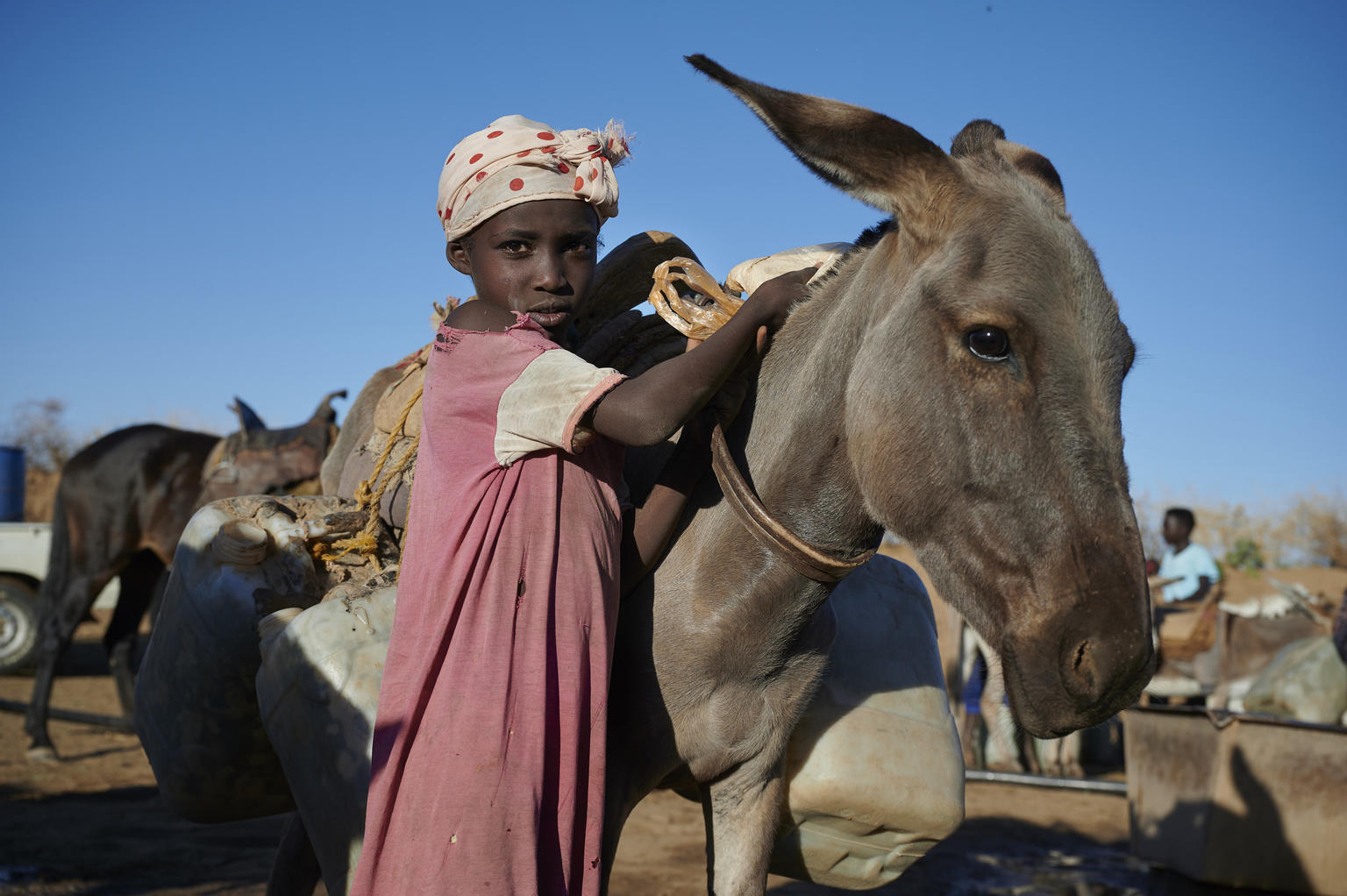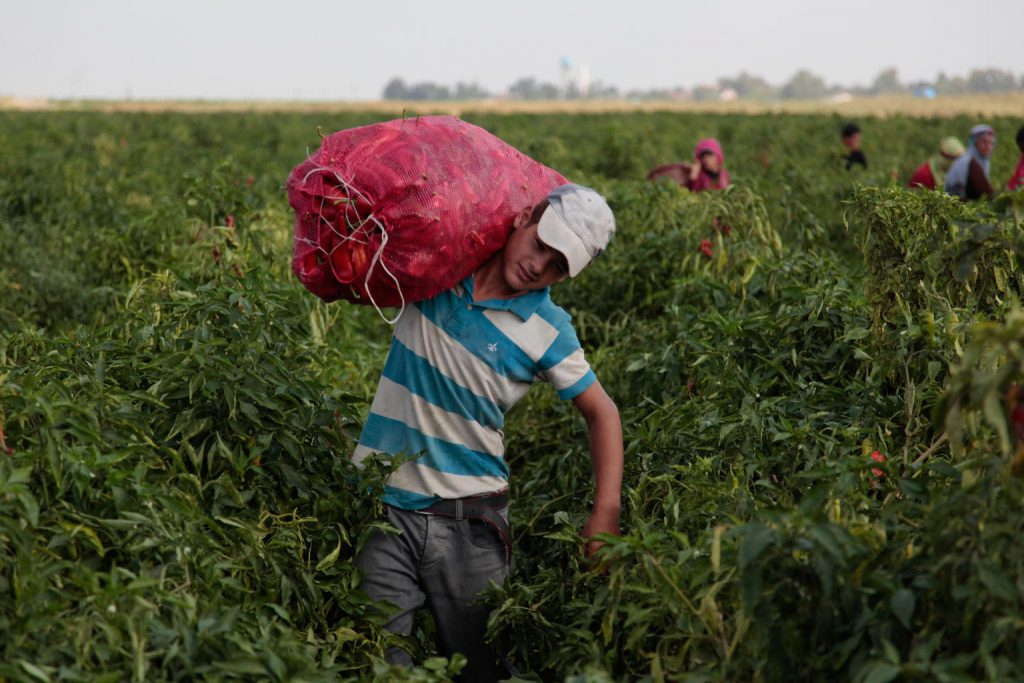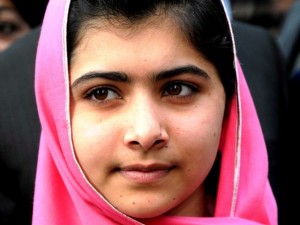March 12, 2011
By PATRICIA LEIGH BROWN
SALINAS, Calif. — A girl in Oscar Ramos’s third-grade class has trouble doing homework because six relatives have moved into her family’s rusted trailer and she has no private space.
A boy has worn his school uniform for two weeks straight because his parents are busy with harvest season.
And while Mr. Ramos patiently explains the intricacies of fractions, he is attuned to the student who confides, “Teacher, on Saturday the cops came and took my brother.”
“I know you still love your brother,” Mr. Ramos gently told him. “But let’s talk about your vision for your future.”
In the clattering energy of Room 21 at Sherwood Elementary here, Mr. Ramos, 37, glimpses life beneath the field dust. His students are the sons and daughters of the seasonal farmworkers who toil in the vast fields of the Salinas Valley, cutting spinach and broccoli and packing romaine lettuce from a wet conveyor belt: nearly 13 heads a minute, 768 heads an hour, 10 hours a day.
One-third of the children are migrants whose parents follow the lettuce from November to April, Salinas to Yuma, Ariz. Some who leave will not return.
“Dear Mr. Ramos,” they write, from Arizona or Oregon, “I hope you will remember me. …” Mr. Ramos, the child of migrants himself, always does.
Schools like Sherwood, and teachers like Mr. Ramos, are on the front lines, struggling against family mobility, neighborhood violence and the “pobrecito,” or “poor little thing,” mentality of low academic expectations. But the often disrupted lives of the children of migrants here is likely to grow still more complicated as the national debate over immigration grows sharper.
Efforts by lawmakers to rescind automatic citizenship for children born in the United States to illegal immigrants are already stoking fears among many agricultural workers, and that has consequences for their children. Some parents, as they move with the crops, are already keeping their children out of school when they get to Arizona because they are worried about the bureaucracy and tougher restrictions in the state.
Despite the resilience of their young charges, educators at Sherwood face a catalog of need: 97 percent of students are near the poverty line, compared with 56 percent statewide. Seventy-seven percent have limited English, versus 32 percent throughout California. Only 6 percent of parents here attended college — the state average is 55 percent — and many are illiterate in their native language.
Though there has been progress, Sherwood hovers near the bottom of the state’s performance index, along with more than 100 California elementary schools with a similar demographic, many in the agricultural strongholds of the San Joaquin and Salinas Valleys.
Even as Latino enrollments grow, the number of new teachers earning bilingual credentials has fallen in the last decade to 1,147 per year from 1,829, according to the California Teacher Commission. The shortage of bilingual teachers is hurting Latino academic achievement, said Bruce Fuller, a professor of education and public policy at the University of California, Berkeley. Teachers like Mr. Ramos, “who have both language skills and the framework to respond to these kids’ cultural assets,” Professor Fuller said, are all too rare.
Mr. Ramos, one of eight children, grew up following the lettuce, too. Home was a farm labor camp near Salinas, and he has traveled far. The camps — a setting forJohn Steinbeck’s “Grapes of Wrath” — were the subject of his undergraduate thesis at the University of California, Berkeley.
In his classroom, he has built an altar of sorts: a collection of Berkeley memorabilia, crowned with the inspiring message “Class of 2024.” But even for the most determined students here, poverty and college often do not mix.
The challenges for children in East Salinas, known as Alisal, have deep roots: during the Depression, thousands of Dust Bowl migrants packed into tiny shacks. Today, Sherwood sits on a fault line of violence between the Hebbron Heights Surenos (blue) and the Fremont Street Nortenos (red) street gangs; a first grader was wounded by gunfire last year hiding behind a play structure. Students must dress in black and white to avoid gang colors.
Bruce Becker, Sherwood’s violence prevention specialist, counsels students who sleep beneath carports and live in such cramped quarters that their parents take them to the local truck stop to wash up before school. Jose Gil, a high school teacher who has started an after-school basketball academy, said many of his students did not see much of their parents during harvest season.
“They have little brothers and sisters to take care of, maybe cook for,” he said. “Yet they’re supposed to turn in a 10-page paper by tomorrow? I mean, it’s unreal.”
Recent crackdowns at the border have meant longer family separations. “My mom’s in Mexico with my little baby sister,” says one girl in Mr. Ramos’s class, a frequent hand-waver. “Every day she calls me, but some days she forgets.”
Mr. Ramos’s approachable style contrasts with the tumult in his students’ young lives. He firmly discusses rules and respect for others with a boy who misbehaves at recess, but takes him aside to talk about superheroes and Mexican soccer, two affinities they share. And in time he learns that his student was worried about his father, who has been deported. Talking with another boy whose father and brothers were jailed for gang activities, Mr. Ramos suggests that he does not need to follow the same path. They discuss the boy’s goal of joining the Marines.
“He wanted to get away,” Mr. Ramos said. “He didn’t want to spend his life in Salinas.”
Like those of many Sherwood parents, the life stories of Benjamin Soto, 51, and his wife, Oliva Resenaiz, 38, are told in their hands.
Mr. Soto completed sixth grade in Mexico; his wife stopped with fifth. The family lives in a landlord’s afterthought of a house down a dirt drive. A garden brimming with vegetables and a homemade swing beneath the avocado tree perk up the modest home. Though Oscar Soto does his homework on a plastic storage bin, he is one of Mr. Ramos’s most gifted students, able to solve complex math problems in his head.
When Mr. Soto wants to encourage his son to work harder in Mr. Ramos’s class, he displays his hands, thick with calluses, his thumb and forefinger permanently crooked from years of gripping a field knife.
“It shows him what a hard life he’d have,” Mr. Soto said.
Rocia Picazo, whose daughter Sara is in Mr. Ramos’s class, leaves at 5 a.m. to pack romaine. Her face is barely visible beneath the protective gear that shields her from the chlorine used to sanitize lettuce.
She was shocked to learn that Sara’s teacher had labored in the fields, picking chilies, walnuts, apricots and lettuce. “I see his face and his hands, and I never imagined he’d do that kind of work,” Mrs. Picazo said.
The $394 million federal Migrant Education Program, created in the 1960s, provides health care, summer school and tutoring for migrant children. Still, nearly half do not complete high school. California has about 200,000 children in the program, one-third of the national total.
Sherwood’s migrant student population dropped 10 percent last year, in part because other crops are providing year-round employment. In addition, said Rosa E. Coronado, the migrant education director for Monterey County, “Parents are getting the message that it’s not beneficial for the children to move around so much.”
One boy in Mr. Ramos’s class did not attend school for five months. He spent his time on PlayStation. This year, his father will move for work. But his mother is staying in Salinas, worried, she said, that “my son is falling behind.”
Families may also be more hesitant to uproot because of the immigration climate. Measures proposed in Arizona recently would deny education to illegal immigrants and require proof of citizenship to enroll in public and private school. The Supreme Court has ruled that every child is entitled to a public education.
Representative Steve King, Republican of Iowa, who introduced a bill to repeal “birthright” citizenship, said that conferring automatic citizenship and educating children of people who are here illegally is a “misapplication” of the 14th Amendment.
“I don’t think lawbreakers should be rewarded,” said Mr. King, the vice chairman of the House immigration subcommittee.
For families in East Salinas, disparities in opportunity come down to education. Terri Dye, the principal of Sherwood Elementary, said the trick was “understanding where the students come from but also having high expectations.”
And so at 6:45 a.m., Mr. Ramos can be found stapling “Student of the Month” notices to the class bulletin board.
There are signs of progress in Room 21: last year, 13 students moved up a level in math, surpassing the state average. During reading vocabulary exercises, hands are raised often, accompanied by exuberant shouts of “Mr. Ramos, I’ve got it!”
Outside the classroom one recent morning, Melissa Aledo described a change she had noticed in her son, Paul Gray.







